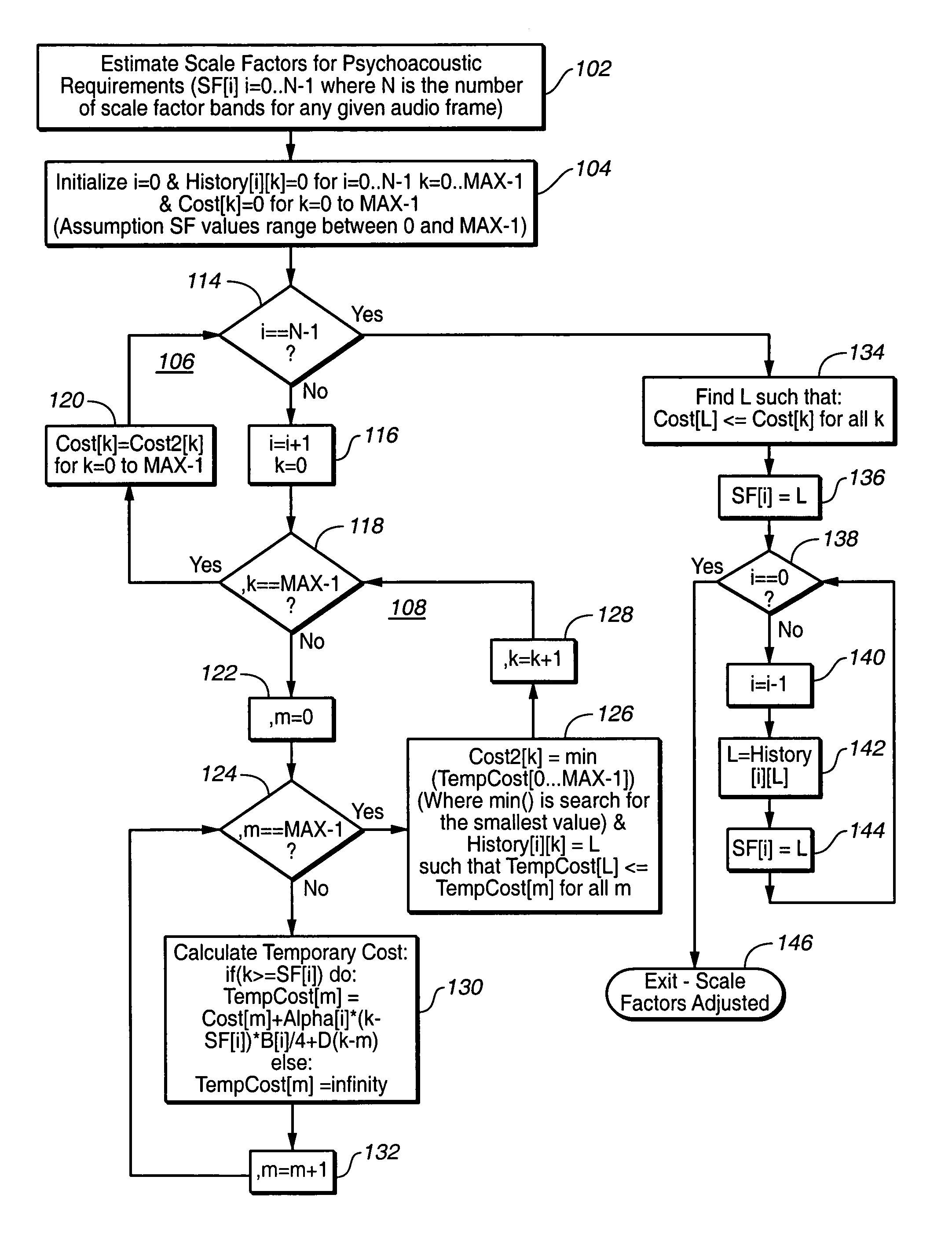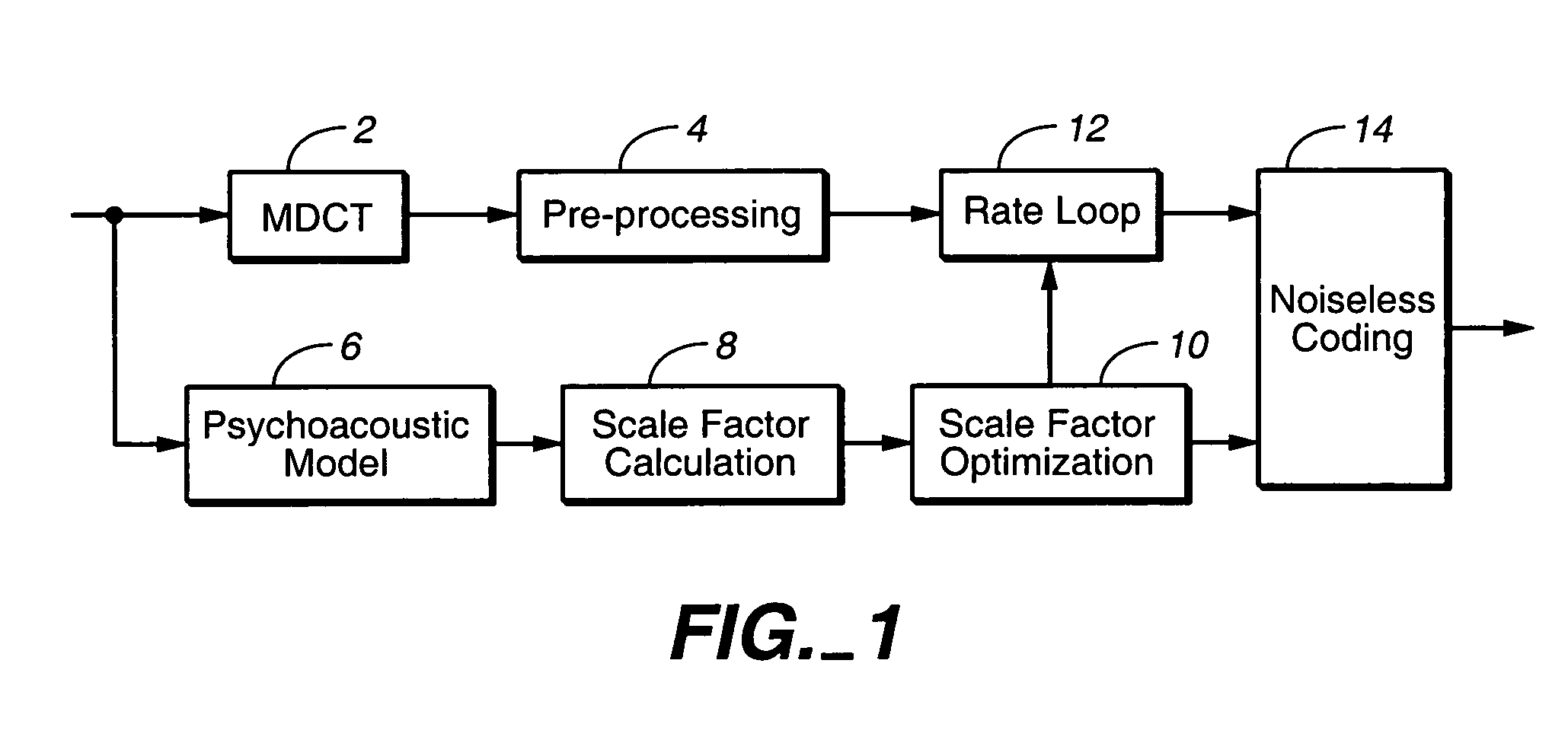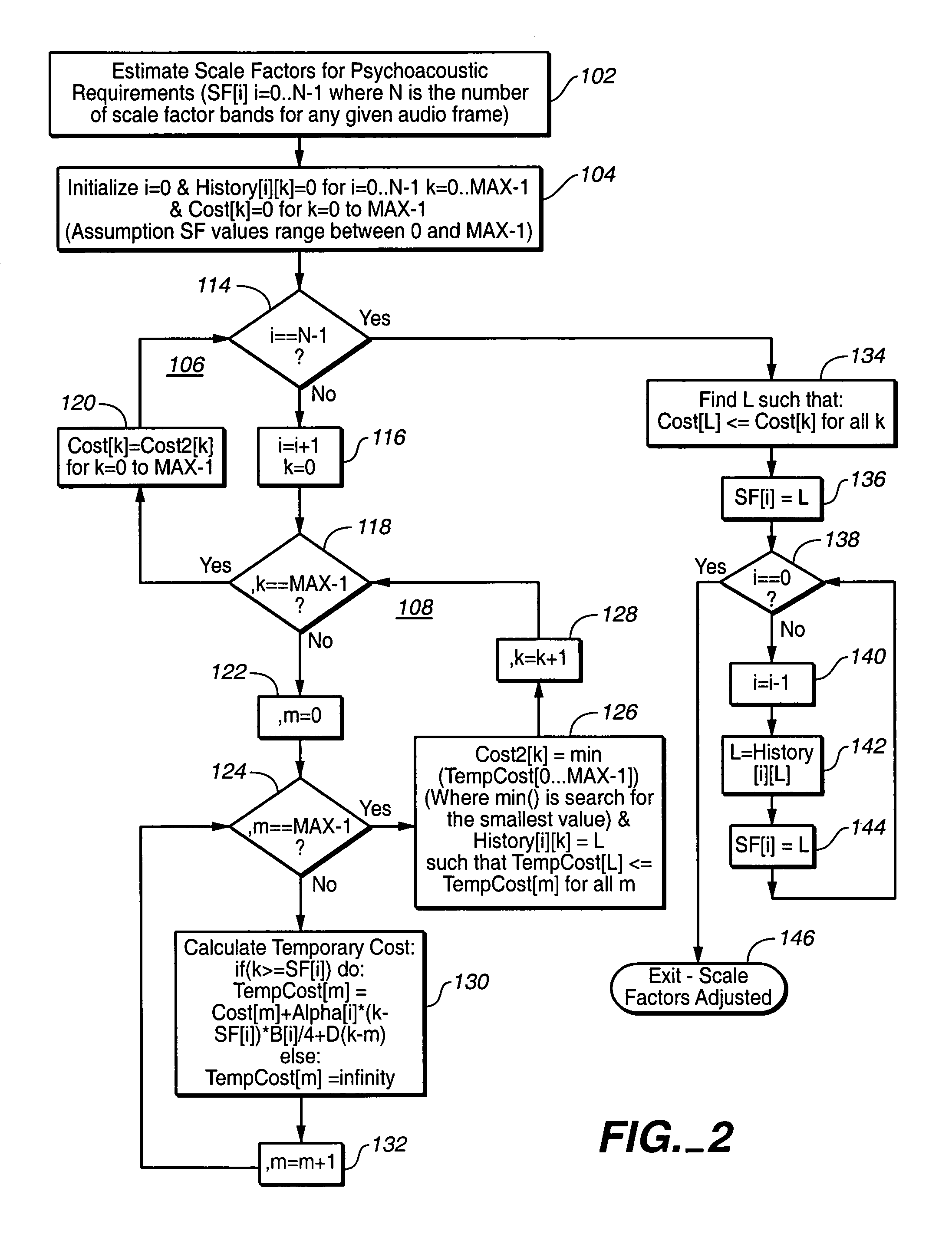Reducing scale factor transmission cost for MPEG-2 advanced audio coding (AAC) using a lattice based post processing technique
a post processing technique and scale factor technology, applied in the field of reducing scale factor transmission cost for mpeg2 advanced audio coding (aac) using a lattice based post processing technique, can solve the problems of increasing the quantization noise in a particular, complicating the scale factor derivation, and reducing the scale factor, so as to reduce the total bit cost, increase the bit cost, and reduce the scale factor value
- Summary
- Abstract
- Description
- Claims
- Application Information
AI Technical Summary
Benefits of technology
Problems solved by technology
Method used
Image
Examples
Embodiment Construction
[0018]FIG. 1 shows a simple, high level schematic of an AAC encoding process incorporating dynamic programming scale factor optimization according to the present invention. The figure shows the scale factor optimization according to the present invention in conjunction with the direct scale factor estimation from masking model information described above. While other scale factor derivation techniques may be improved using the teachings of this invention, the invention is particular suitable for use with this direct estimation technique.
[0019]In FIG. 1, the input audio is transformed using an MDCT 2, followed by pre-processing 4 (e.g., temporal noise shaping (TNS), prediction and middle-side coding (MS) for stereo applications). The input is also passed to a psychoacoustic model 6, which calculates the masking level. As explained above, the masking model is used directly to compute the scale factors for each band (“scale factor calculation”8). While the preliminary scale factors der...
PUM
 Login to View More
Login to View More Abstract
Description
Claims
Application Information
 Login to View More
Login to View More - R&D
- Intellectual Property
- Life Sciences
- Materials
- Tech Scout
- Unparalleled Data Quality
- Higher Quality Content
- 60% Fewer Hallucinations
Browse by: Latest US Patents, China's latest patents, Technical Efficacy Thesaurus, Application Domain, Technology Topic, Popular Technical Reports.
© 2025 PatSnap. All rights reserved.Legal|Privacy policy|Modern Slavery Act Transparency Statement|Sitemap|About US| Contact US: help@patsnap.com



